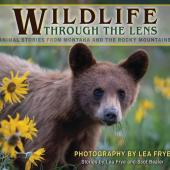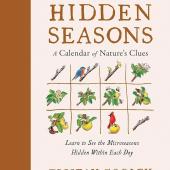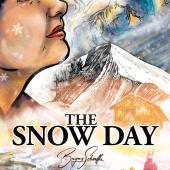Kick Your Feet Up
The outdoors in your hands.
When the O/B crew clocks out, it’s straight to the singletrack, boulders, and trout streams. After that, or when it’s just time to kick the feet up, we like to keep our minds sharp, too. Here are a few books that will keep the outdoors at the forefront of your mind, even from the comfort of your recliner.
The Stranger in the Woods
At least once a week—especially during tourist season—I wonder how long I’d last completely alone in the woods. In The Stranger in the Woods: The Extraordinary Story of the Last True Hermit (Alfred A. Knopf, $11), Bozemanite Michael Finkel illuminates the true story of Chris Knight, who walked into the woods of Maine and remained unseen—but not unnoticed—for nearly three decades. Although the “North Pond Hermit” lived in the same solitary camp for 27 years, he relied on the belongings of nearby camps and cabins for his survival; by leaving society, Knight became even more entrenched in it. Finkel’s exploration into the minds of historical and literary recluses and his uninvited visits with Knight reveal an un-romanticized version of solitude. This is a story that could have dwelled in the wilderness forever, but with respect and admiration, Finkel shares it with us. —EMMA NORD
People of Yellowstone
Pitted against out-of-staters in a bragging contest, Montanans have the plethora of national parks as a trump card, including the world’s first, Yellowstone. Photographer Steve Horan and writer Ruth W. Crocker paint the intricate picture millions of tourists who visit the Park annually never see—the extraordinary individuals who work and live in Yellowstone National Park. People of Yellowstone (Canyonlands Publications, $30) captures 87 of these people in their element. From Larry Christensen, former law-enforcement officer and current bison herder, to Linda Thurston, a wolf-tracker who naps in abandoned dens, this photo book peaks into the minds that know the Park best; it will keep you flipping through its pages and beckon you back to Yellowstone. —DREW HULSE
Stranded
For fans of narratives such as Hatchet, The Revenant, and The Call of the Wild, Matthew P. Mayo’s compelling historical fiction, Stranded: A Story of Frontier Survival (Five Star Publishing, $18) is an adventure tale for young and old readers alike. Mayo tells a brutal story through the fictional journal of real-life 14-year-old Jannete Riker, who found herself stranded alone in the Montana Territory—during winter. In late September of 1849, Janette journeyed west to Oregon in a covered wagon with her father and two brothers who, after setting out to hunt bison, never returned. This gripping story made me feel as if I was there with Janette, in her sorrow and fear, and I could not stop reading until I reached the end. Mayo brings us into Janette's amazing tale of survival and her pursuit of hope. Stranded is a fluid and charismatic anecdote, the tale of a hardship that hopefully no one will have to willingly endure. —EMMA NORD
Glorious Times
Noteworthy naturalists, the Craigheads, are known by conservationists for their great curiosity, authenticity, and drive to play in and protect the natural world. Carefully and meticulously researched, Glorious Times: Adventures of the Craighead Naturalists (University of Montana Press, $19) is an account of the Scots-Irish Craighead descendants, whose predisposition for nature shaped many conservation efforts we know today. Tom Benjey’s enlightening account reveals the wonders of what can come from instilling responsibility and curiosity for nature in young children—and focuses on the lives of siblings Frank Jr., John, and Jean, who spent the majority of their conservation efforts in Montana and Wyoming. Famous Craighead contributions include DDT research that was included in Rachael Carson’s Silent Spring, pioneering grizzly research and the introduction of the Greater Yellowstone Ecosystem concept, and children's novel My Side of the Mountain. Through their extraordinary lives, the Craigheads show us that the value of family and nature—especially when combined—cannot be forgotten over the generations. —EMMA NORD
For a Little While
In For a Little While (Little, Brown and Company, $11), Rick Bass, writer-in-residence at Montana State University, reveals the litany of human struggles through his masterful imagery of the American outdoors. From the Gulf of Mexico to the Yaak River, no landscape is beyond his wheelhouse. In turn, no social dynamic escapes his inquiry. His characters grapple with fate in individual conflicts that parallel the overall American narrative: the swamps of poverty-stricken, post–Civil War Mississippi and the mountains of hypothermia-inducing, elk-hunting Montana are connected by their unbreakable bond with nature—a magnetic, unforgiving bond. Laced with hunting and fishing motifs, this collection of short stories is an essential addition to any Montana library. —DREW HULSE
Cold-Hearted River
Keith McCafferty’s sixth Sean Stranahan mystery, Cold-Hearted River (Viking, $18), takes place in the Montana backcountry when a woman freezes to death in a bear cave, famed author Ernest Hemingway’s leather fly wallet in her possession. Stranahan, a private investigator known equally for taking up residence in a tepee as for his charm with the opposite sex, scours southwest Montana for the remainder of the author’s stolen fishing gear. The more stones he turns, the more bodies pile up. As local law enforcement parallels the investigation, Stranahan re-kindles an old flame with sheriff Martha Ettinger, “armed and beautiful,” tangling the lines of intellect and emotion. Set along our own Madison River, images of fingers floating in tequila jars and cowboys surviving the cold in horse carcasses will fill the silence of your fishing meditation for weeks. —DREW HULSE
Canyon Village in Yellowstone
Over 60 years after "Mission 66"—the solution to the projected 80 million tourists overcrowding national parks in 1966—National Park Service employee Conrad Wirth’s visionary genius is more apparent than ever. With Bozeman growing at its current rate, and millions of tourists entering Yellowstone National Park each year, we have Wirth to thank for contributing to the Park’s conservation and its adaptation to the influx of visitors. With its pilot development in Yellowstone, Mission 66 disregarded precedents—political, environmental, and even architectural—and redefined the federal government's role in our national parks. Lesley M. Gilmore's Canyon Village in Yellowstone: The Model for Mission 66 (History Press, $21) reads like a history book (don't expect plot twists around every turn), but its contents are applicable in any conservationist discussion; it is at once the joyful alternative for what could have been—dilapidated facilities too close to the rim of the Park’s Grand Canyon, for example—and, as government work often induces, a lamentation of concessions that weakened the overall mission of Canyon Village. —DREW HULSE
Badlands Impressions
Nature speaks to those who listen. Through Badlands Impressions (Farcountry Press, $13), photographer Chuck Haney and author Dick Kettlewell tell the tales that have whistled through the badlands’ eroded buttes, pinnacles, and spires for millennia. Rock formations formed over multiple geologic periods house 10,000-year-old fossil beds revealing that early North Americans hunted in the badlands; westward-bound settlers later used the area's formations as navigation landmarks, and the landscape's rugged beauty inspired a young Theodore Roosevelt to shape a conservation policy from which we still benefit today. By the end of Badlands Impressions, it is clear that the narrative lives on—from bison re-introduction in national parks to mountain biking the Maah Daah Hey Trail, we continue to write our history in the badlands. –DREW HULSE











